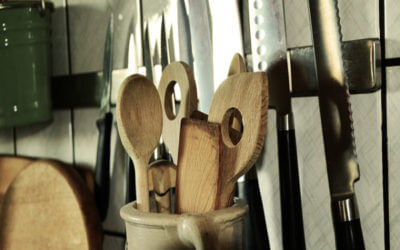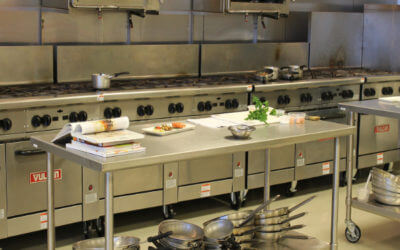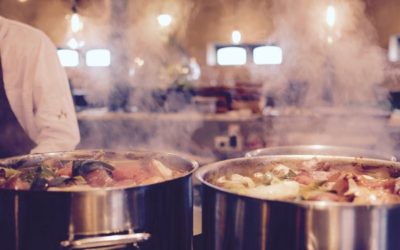Tips for Great Plating & Why it Matters
December 6, 2018You may have heard that we “eat with our eyes” before we physically eat food. That’s why pictures are so important – on menus, in cookbooks, online, and more.
It isn’t just a gimmick – the truth is that the way food looks and smells actually changes our experience of how it tastes. One study showed that when wine experts drank white wine tinted red with coloring, they described it with red wine descriptors.
What they saw completely changed the taste profile they experienced!
Considering how you plate food in your commercial kitchen will go a long way toward making your restaurant more successful and desirable to patrons. Here are a few tips!
Have Standard Plating for Specific Types of Food
The things that cause plating to fall short in restaurants is often a simple lack of time. During the rush, it seems more important to get the food out on time than it does to make it look good.
Unfortunately, to your guests, they are equally important. The good news is that you can create standard protocols for different types of food that make it easier for your commercial kitchen.
For instance, have specific plate sizes that fit all of your steak or chicken dishes. Have another one that fits all your pasta dishes. The size should help your portions look neither too big nor too small.
After that, have a standard process – meat goes here, sides here, etc. The consistency will help ensure that your kitchen executes well and that your customers have the same experience every time.
Use Simple Techniques
One simple plating system is to see the plate as a clock. From the diner’s point of view, you can place the protein between 3 and 9, the starch from 9 to 12, and the vegetable from 12 to 3.
You can also make things easier for your servers – and your customers – by placing runny ingredients on the plate first. It won’t be as messy to deliver, and you can make it attractive by angling the other ingredients on top.
Finally, work with color and texture to create an attractive presentation. Sometimes the sides are standard, which can make plating easier for your commercial kitchen. If the patron chooses the side, you can have a standard system for how to arrange soft, crunchy, green, white, and more.
Establish a Focal Point
No matter how your commercial kitchen plates an item, make sure that the eye is drawn to the highlight of the meal – generally the main dish.
You can do this using the rule of thirds, which is often used in photography but can be used to make anything more attractive. You can also use texture, color, or even height.
Simply fluffing a salad a bit will help create a better sense of dimension, or you can pile potatoes or stack pieces of meat.
Having a three-dimensional approach will make your food look better – which makes it taste better!
Get the Supplies Your Commercial Kitchen Needs
From differently sized plates to decorating brushes to shavers, your commercial kitchen needs to be equipped to create beautiful food.
Get them what they need with help from Tipton Equipment! We’d love to help your Little Rock restaurant with your plating needs. Contact us for a quote today!
Do You Have the Right Kitchen Equipment?
One of the best things you can do for yourself is learning how to cook your own meals. Knowing that you made a delicious dinner for yourself, the feeling of independence, and it's a huge money saver! No more paying to go out every meal. Whether you’re new to the...
Buying Used Kitchen Equipment Could be Your Newest Hobby
Advantages of buying used Just like any other advantage of buying used, you save money with the thrill of finding the best deal. Brand new kitchen equipment can leave a big dent in your wallet. Buying used is an affordable way to fulfil the needs that you have in your...
How do You Compare to a Commercial Kitchen?
How do you think your home kitchen stacks up against a commercial kitchen? We know you’re the master chef at home, but do you think you can enter the big leagues in the back of a restaurant? You’ve seen every Food Network show, you’ve been mixing it up in the kitchen...



